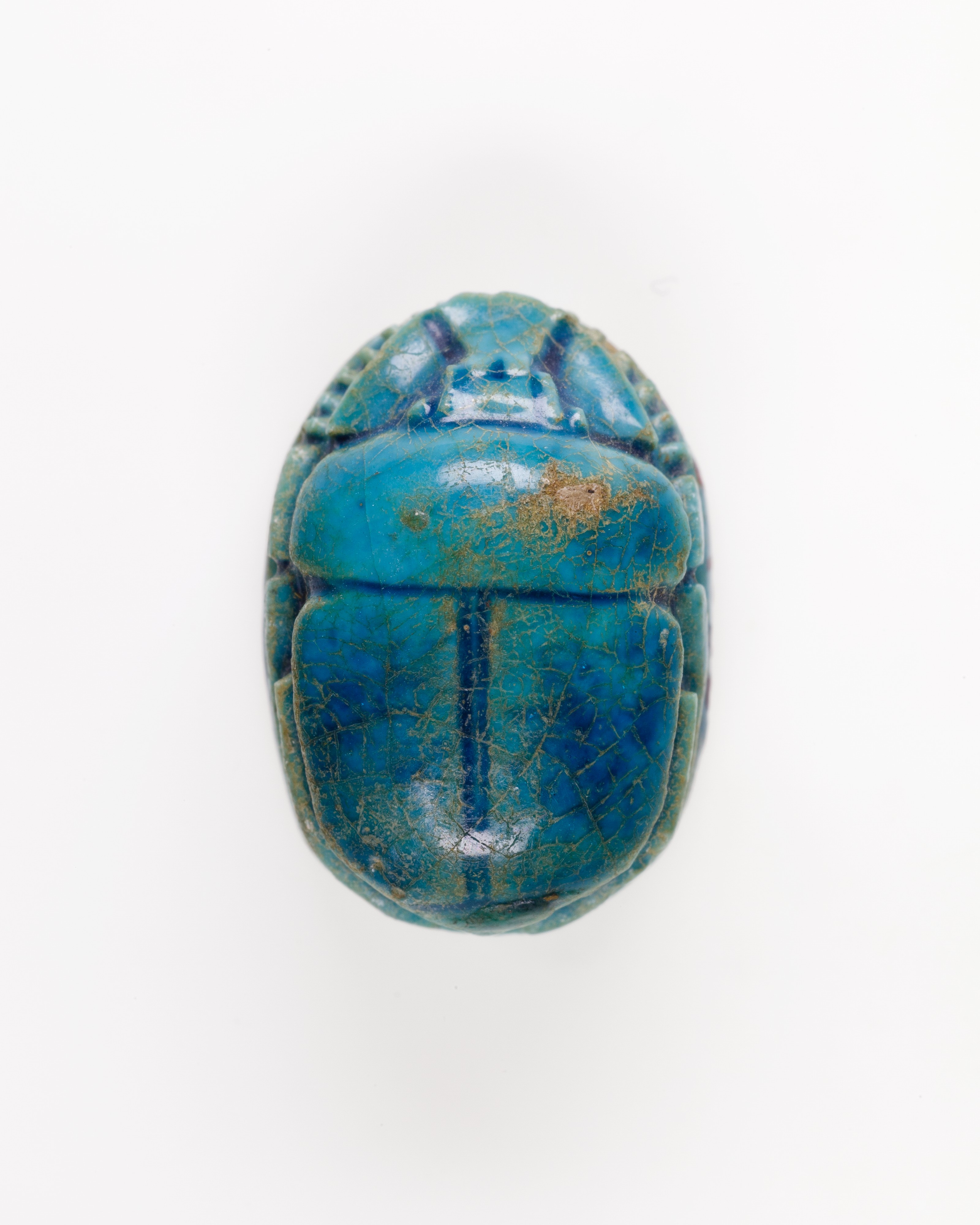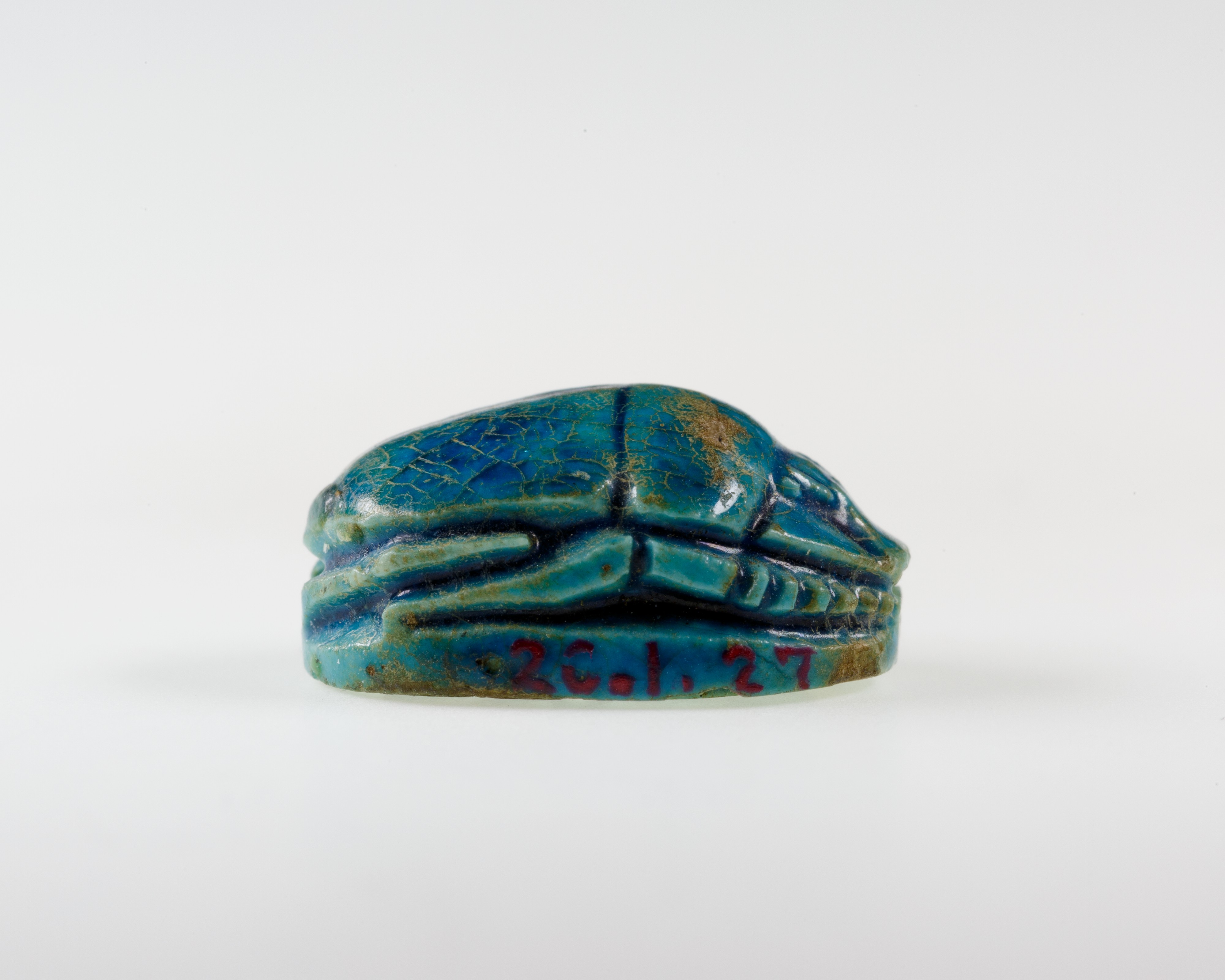Scarab with Crucifom Lotus Flower Decoration
Middle Kingdom
Plants are a popular theme on the underside of ancient Egyptian seal-amulets because they refer to life, renewal, and regeneration. They mainly consist of representations of papyrus plants, and lotus flowers and their buds.
This cruciform composition shows four lotus flowers, known from several other scarabs of the late Middle Kingdom (late Dynasty 12–Dynasty 13, ca. 1850–1640 B.C.). For the ancient Egyptians, the lotus is the symbol of Upper Egypt and of rebirth. In the empty spaces between the flowers are petals.
The scarab shows details in the shape of its back, more specifically of its head, that indicate it was probably carved in a workshop in the vicinity of Lisht during Dynasty 13, approximatively between 1766 and 1677 B.C.
Due to rights restrictions, this image cannot be enlarged, viewed at full screen, or downloaded.
This artwork is meant to be viewed from right to left. Scroll left to view more.





